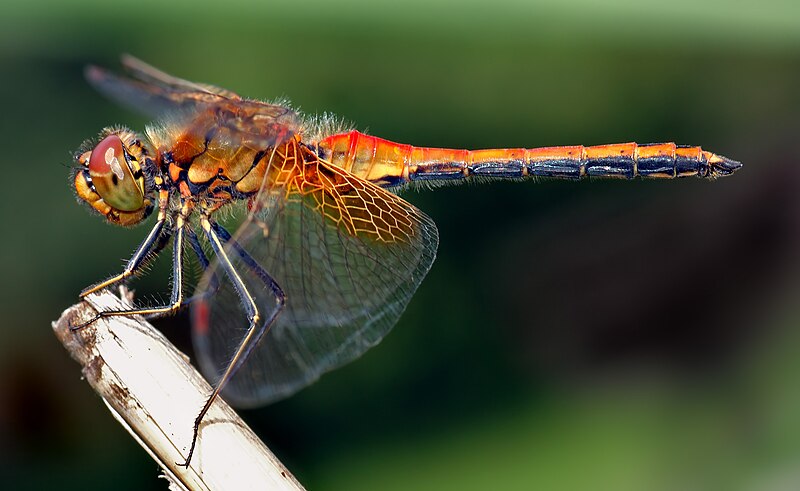Hello ladies and gents this is the Viking telling you that today we are talking about
DRAGONFLY
A dragonfly is an insect belonging to the order Odonata, infraorder Anisoptera (from Greek ἄνισος anisos, "unequal" and πτερόν pteron, "wing", because the hindwing is broader than the forewing). Adult dragonflies are characterized by large, multifaceted eyes, two pairs of strong, transparent wings, sometimes with coloured patches, and an elongated body.
Dragonflies can be mistaken for the related group, damselflies (Zygoptera), which are similar in structure, though usually lighter in build; however, the wings of most dragonflies are held flat and away from the body, while damselflies hold their wings folded at rest, along or above the abdomen. Dragonflies are agile fliers, while damselflies have a weaker, fluttery flight. Many dragonflies have brilliant iridescent or metallic colours produced by structural colouration, making them conspicuous in flight. An adult dragonfly's compound eyes have nearly 24,000 ommatidia each.
Fossils of very large dragonfly ancestors in the Protodonata are found from 325 million years ago (Mya) in Upper Carboniferous rocks; these had wingspans up to about 750 mm (30 in). About 3,000 extant species are known. Most are tropical, with fewer species in temperate regions. Loss of wetland habitat threatens dragonfly populations around the world.
Dragonflies are predators, both in their aquatic larval stage, when they are known as nymphs or naiads, and as adults. Several years of their lives are spent as nymphs living in fresh water; the adult stage of some dragonflies may be as long as 10 weeks, but most species have an adult lifespan in the order of 5 weeks or less, and some last only a few days.
They are fast, agile fliers, sometimes migrating across oceans, and often live near water. They have a uniquely complex mode of reproduction involving indirect insemination, delayed fertilization, and sperm competition. During mating, the male grasps the female at the back of the head, and the female curls her abdomen under her body to pick up sperm from the male's secondary genitalia at the front of his abdomen, forming the "heart" or "wheel" posture.
Dragonflies are represented in human culture on artifacts such as pottery, rock paintings, statues and Art Nouveau jewelry. They are used in traditional medicine in Japan and China, and caught for food in Indonesia. They are symbols of courage, strength, and happiness in Japan, but seen as sinister in European folklore. Their bright colours and agile flight are admired in the poetry of Lord Tennyson and the prose of H. E. Bates.
And as always have a chilled day from the Viking

Comments
Post a Comment